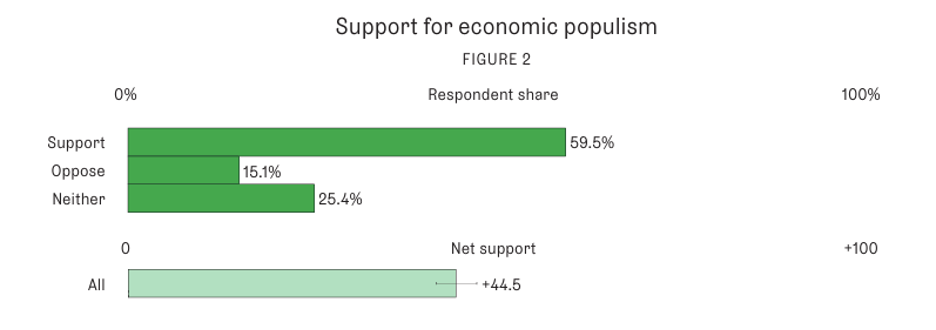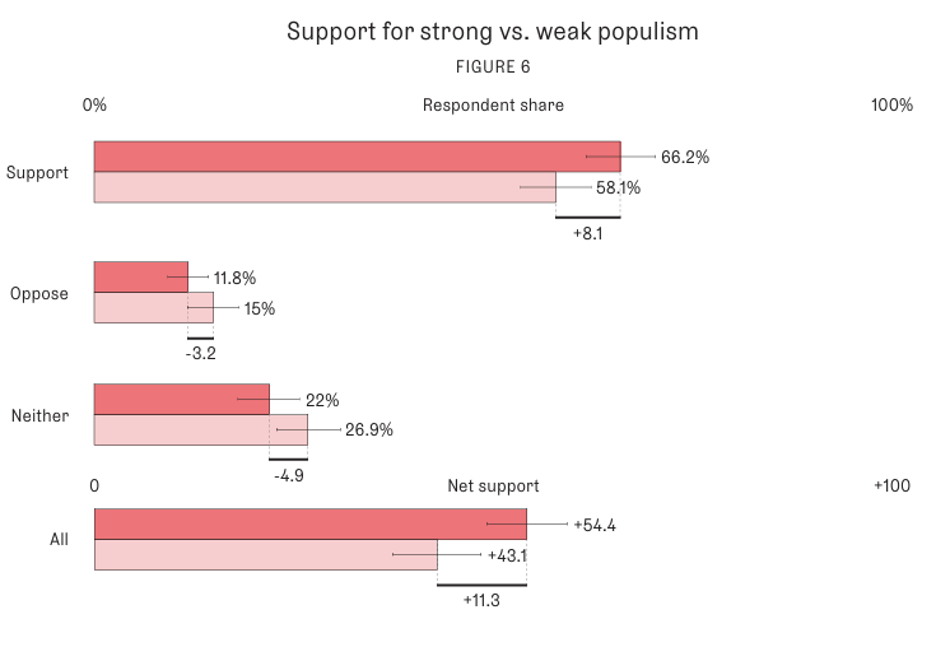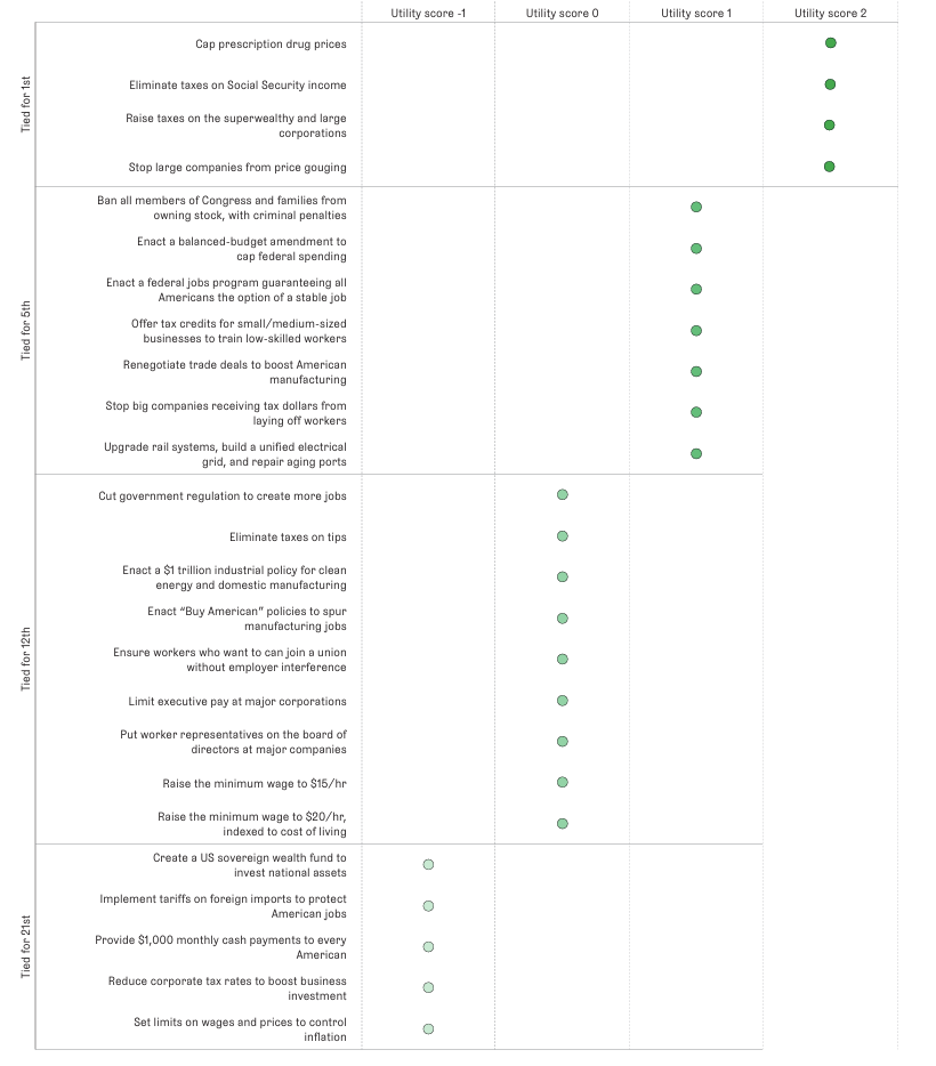Report: Economic Populism Has Broad Appeal in the Rust Belt
An exhaustive new survey from the Center for Working-Class Politics and its partners finds that strong economic populism resonates across Ohio, Michigan, Wisconsin, and Pennsylvania — and that independent candidates outperform Democrats delivering the same message.
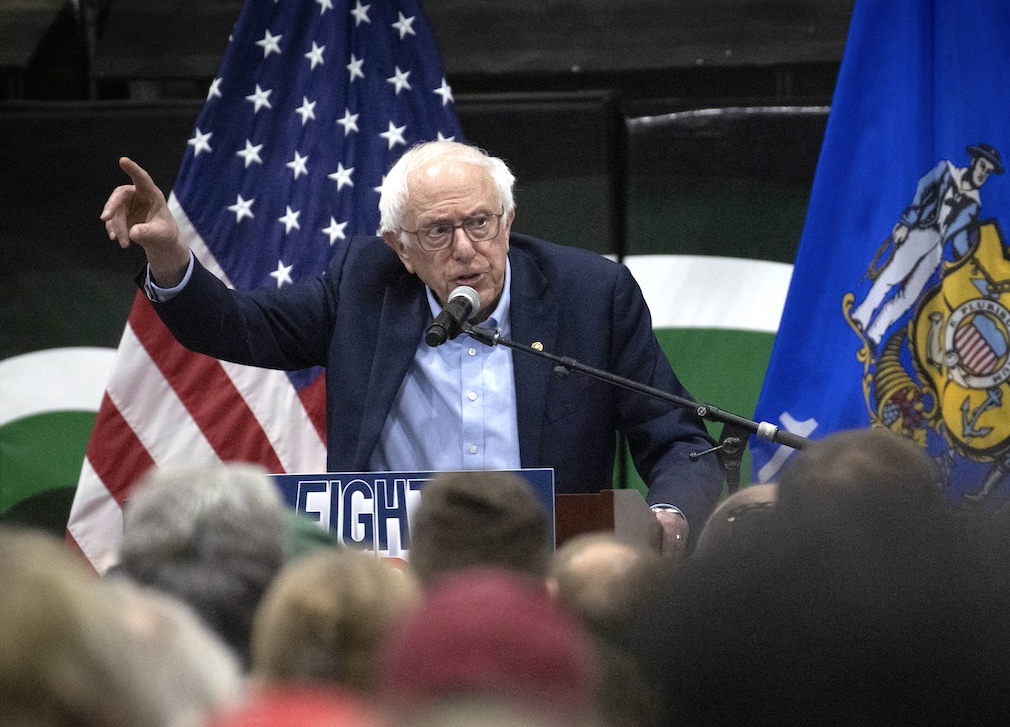
Democratic candidates underperformed their independent counterparts, even when delivering the exact same economic populist message. (Scott Olson / Getty Images)
Inequality in the United States is higher now than at any point since the early twentieth century. The broad prosperity of the postwar era has been replaced by deindustrialization, mass layoffs, and the erosion of unions, turbocharged by tax breaks for the wealthy and financial deregulation.
Since the Democratic Party embraced many of the policies that caused these trends, working-class voters have increasingly bolted from the party they feel has abandoned them. This exodus has been especially damaging in Rust Belt counties in states like Ohio, Pennsylvania, Michigan, and Wisconsin, which have weathered decades of plant closures, wage stagnation, and elite neglect.
A new study conducted by the Center for Working-Class Politics (CWCP), the Labor Institute, the Labor Education Action Research Network (LEARN), and Jacobin, in partnership with YouGov, asks whether a sharper, bread-and-butter economic populism from progressives can reconnect with disaffected Rust Belt voters. The research surveyed 3,000 voters across Pennsylvania, Michigan, Ohio, and Wisconsin.
The study includes a series of randomized controlled trials (RCTs) testing the impact of different kinds of economic populist messaging. Special attention was paid to a policy with unique salience in deindustrialized regions: a ban on involuntary mass layoffs at firms that receive public funds. The trials also tested whether the effectiveness of these messages changes depending on whether candidates run as Democrats or independents.
The survey included open-ended questions about respondents’ views of the Democratic Party. These were analyzed to understand the key factors driving Rust Belt voters’ negative attitudes toward the party. Another RCT examined the political potential of a nonpartisan ballot initiative on mass layoffs and corporate accountability. This allowed the study to test whether such an initiative could help advance populist politics beyond the traditional blue-red divide. Finally, the study included a unique test of Rust Belt voters’ economic policy preferences. Respondents were required to prioritize their support for twenty-five proposals that spanned the ideological spectrum.
Some of Our Key Takeaways
1. Strong economic populism has broad and deep support. Economic populist messaging yielded net support of +45 points (defined as the percentage of respondents who support minus those who oppose). Messages that directly named corporate greed and economic elites as the problem outperformed the softer, “populist-lite” alternative by more than 11 points.
2. The Democratic Party’s brand is a major liability. In head-to-head tests, Democratic candidates underperformed their independent counterparts by more than 8 points, even when delivering the exact same economic populist message. This “Democratic penalty” was largest among working-class, Latino, rural, and swing voters, and is more than enough to lose competitive elections across the region. The penalty was between 11 and 16 points in Michigan, Ohio, and Wisconsin. By contrast, we did not observe such a penalty for Democratic candidates in Pennsylvania.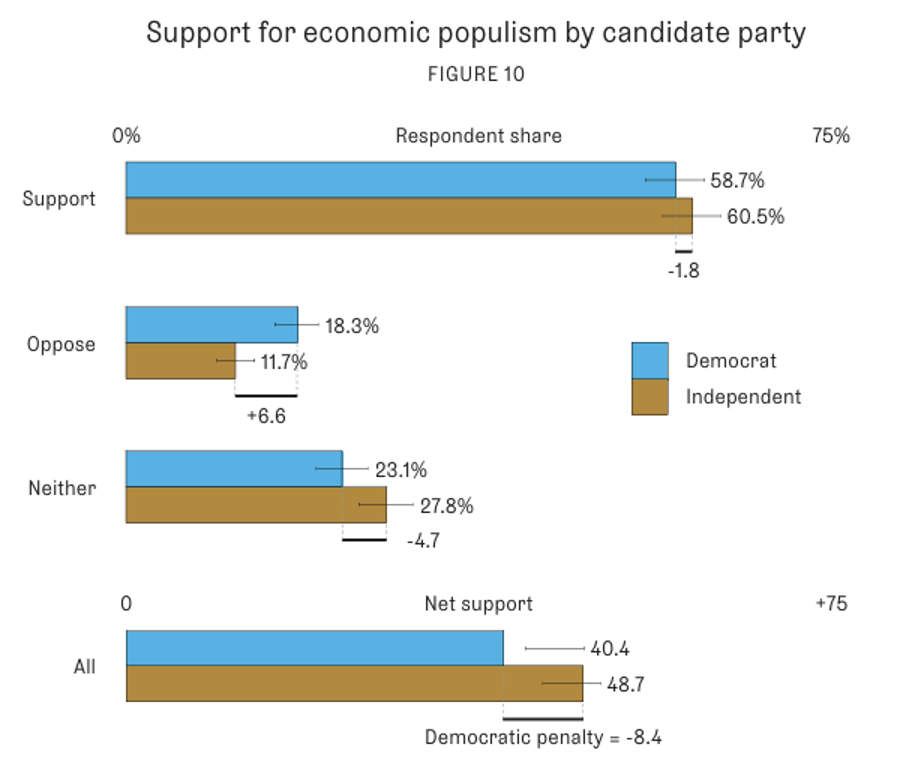
3. Voter disillusionment with Democrats is more about failure and less about ideological extremism. Across Democrats, independents, and Republicans, many described the party as corrupt, out of touch, unwilling to fight for working people, and not a party for working people. While some of these critiques bled into broader claims that Democrats are focused on the wrong priorities, only small minorities cited “wokeness” or extremism (3% of Democrats, 11% of independents, and 19% of Republicans).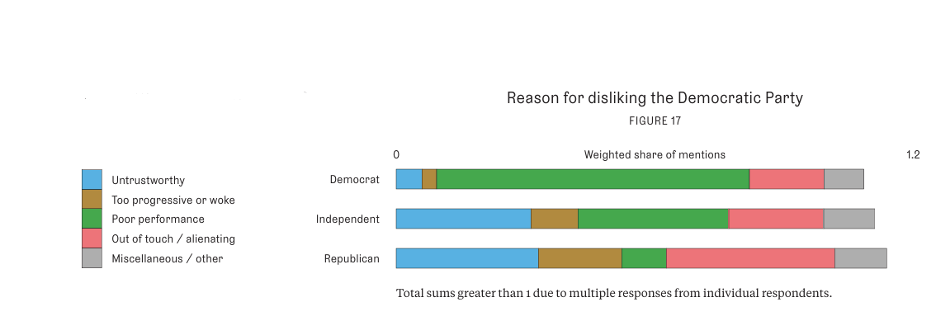
4. The most popular economic policies are bold, tangible, and grounded in fairness — and can unite voters across class and partisan lines. Across twenty-five ranked proposals, policies that reduced costs, curbed corporate abuse, and held elites accountable (capping drug prices, taxing the wealthy, and even enacting a federal jobs guarantee) consistently performed best. Support for many of these policies cut across ideological and class divisions, highlighting the potential of economic populism to build the broad coalitions progressives need to win.
5. Even an unfamiliar, ambitious proposal to ban mass layoffs by federal contractors enjoys strong support. A new policy proposal to stop large companies that receive taxpayer money from conducting involuntary layoffs was one of the most popular policies tested, despite being unknown to voters. A separate ballot-initiative simulation showed the policy retained strong net support even when targeted by corporate opposition messaging — especially when paired with rebuttals from supporters of the initiative.
6. Independent populist politics may offer a credible path forward. Across the four Rust Belt states we surveyed, 57% of respondents supported the creation of a new Independent Workers Political Association (IWPA), with especially strong enthusiasm among noncollege voters, renters, voters of color, and the economically insecure. The idea of an IWPA drew significant support from Republicans and independents as well — suggesting a realignment opportunity grounded in economic populism. You can read the full report here.
You can read the full report here.
